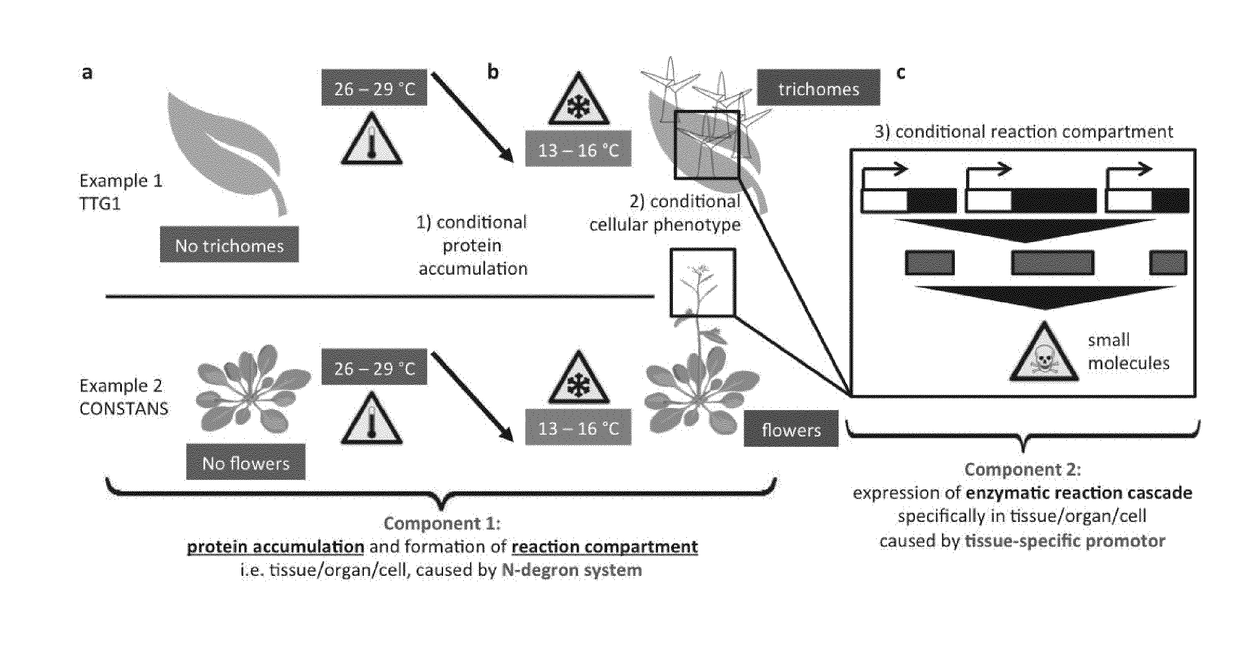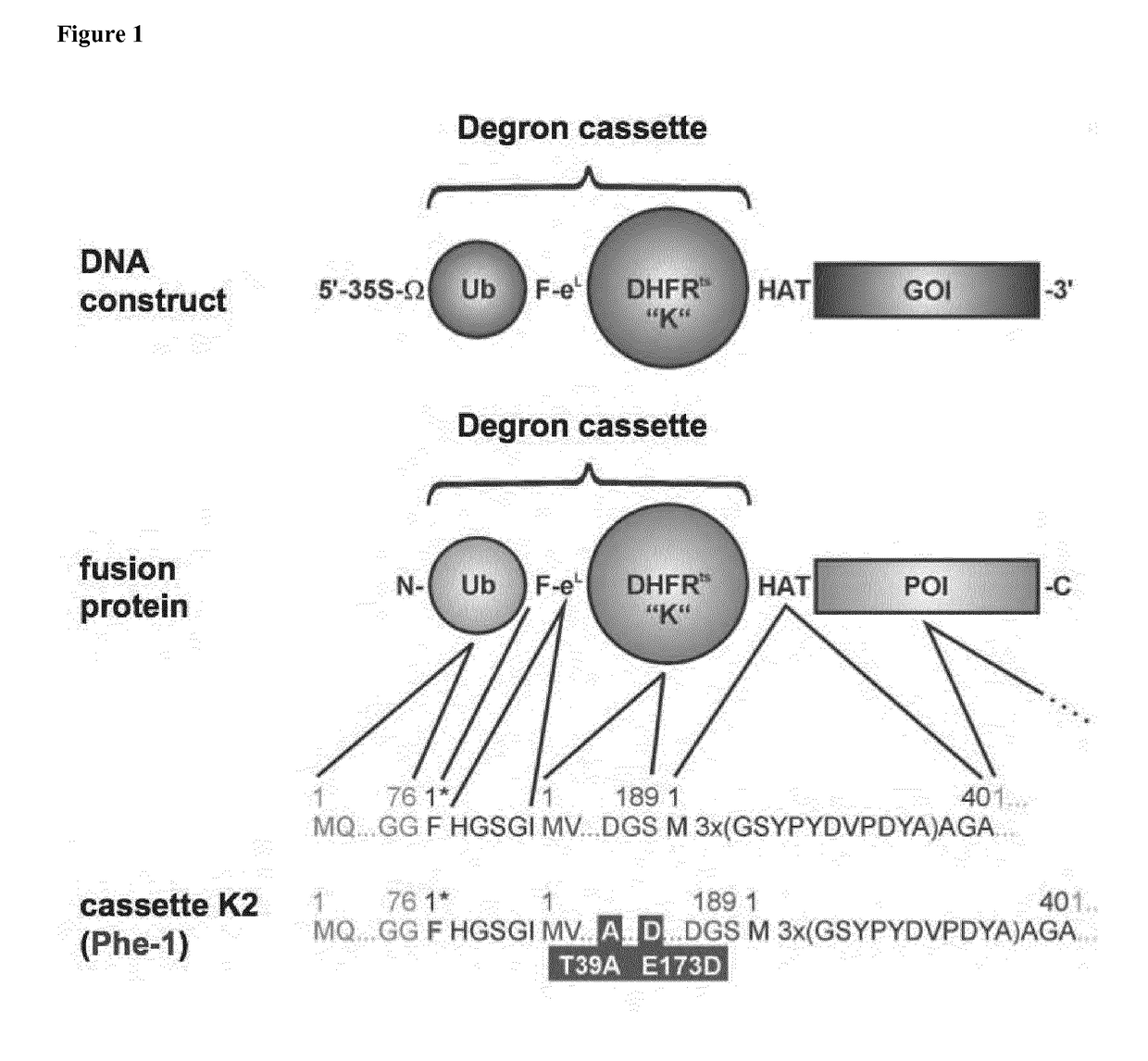Rapid depletion and reversible accumulation of proteins in vivo
a technology of reversible accumulation and protein depletion, which is applied in the field of reversible accumulation of proteins in vivo, can solve the problems of difficult identification of multicellular species and limited procedures, and achieve the effect of lowering the level of a specific gene produ
- Summary
- Abstract
- Description
- Claims
- Application Information
AI Technical Summary
Benefits of technology
Problems solved by technology
Method used
Image
Examples
example 1
Modelling of Temperature-Sensitive DHFR Variant DHFR T39A / E173D (K2)
[0103]To find the underlying molecular cause for the enhanced temperature-sensitivity of the K2-DHFR T39A / E173D (SEQ ID No. 3), compared to the classical yeast DHFR P67L (K1) and a DHFR protein comprising all three substitutions (K3), we predicted and analysed the impact of the three relevant substitutions by molecular dynamics (MD) and constructed models based on the crystal structure. By calculating root mean standard deviation (RMSD), we found enhanced molecular flexibility in the protein structure of all three substitutions indicating that the mutations lead to increased thermolability and cause a higher intramolecular flexibility between the neighbouring amino acid residues and even within entire domains of the degron-DHFR. MD simulations revealed that none of the three tested DHFR variants undergoes unfolding as suggested previously. To further elucidate the molecular origin of increased thermolability in the ...
PUM
| Property | Measurement | Unit |
|---|---|---|
| temperature | aaaaa | aaaaa |
| temperatures | aaaaa | aaaaa |
| temperatures | aaaaa | aaaaa |
Abstract
Description
Claims
Application Information
 Login to view more
Login to view more - R&D Engineer
- R&D Manager
- IP Professional
- Industry Leading Data Capabilities
- Powerful AI technology
- Patent DNA Extraction
Browse by: Latest US Patents, China's latest patents, Technical Efficacy Thesaurus, Application Domain, Technology Topic.
© 2024 PatSnap. All rights reserved.Legal|Privacy policy|Modern Slavery Act Transparency Statement|Sitemap



